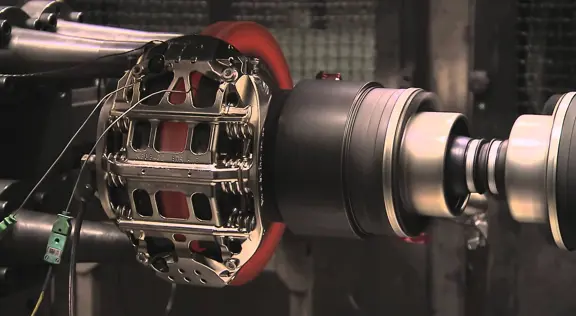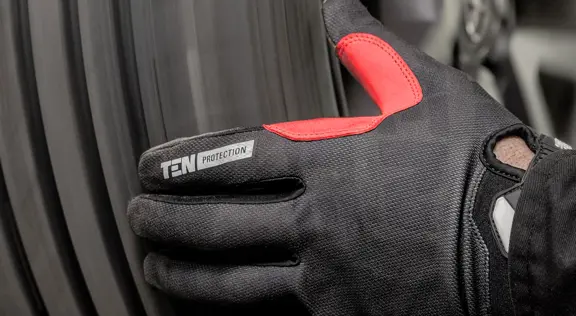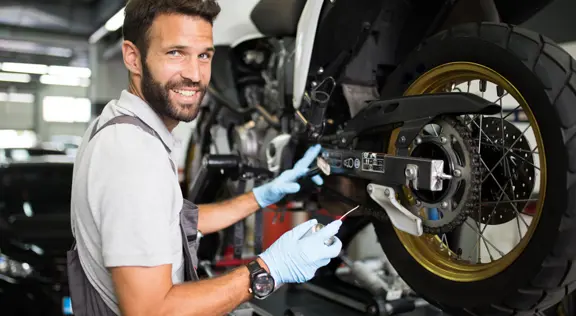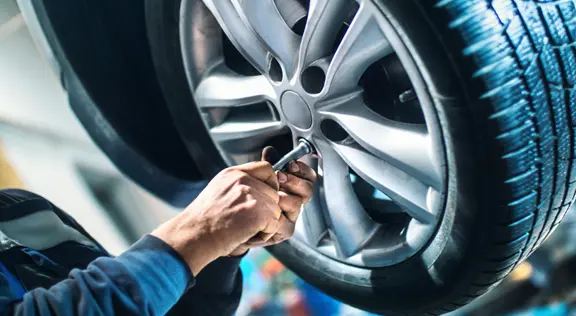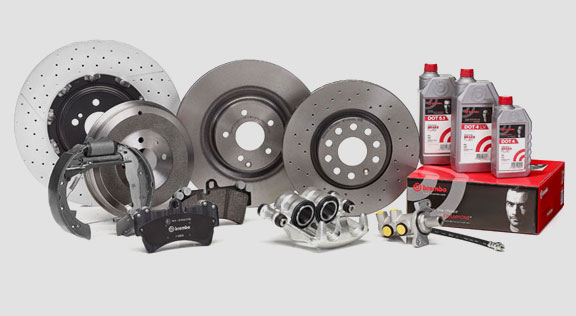How can I tell if my brake pads are worn?
What are brake pads and why are they important?
Brake pads are components of one of the most widespread disc braking systems in modern vehicles. Their function is to create friction with the brake discs, gradually slowing the vehicle to a stop. They consist of friction material applied to a metal support, which ensures uniform pressure during braking.
When the brake pedal is pressed, the caliper pistons push the pads against the disc, generating heat and friction. The pads are subject to inevitable wear precisely because of this constant stress.
How often should brake pads be checked and replaced?
The service life of brake pads varies depending on several factors, such as driving style, type of route and pad material.
On average, front brake pads should be replaced every 25,000 to 50,000 km, while rear brake pads can last twice as long. However, wear may occur much earlier if you often drive in cities or on mountain roads.
Check the pads at least once a year or at every service, especially if you notice signs of deterioration
How to recognise worn brake pads: the signs not to be ignored
Recognising the symptoms of wear and tear is crucial to avoid more serious problems. Here are the main signs to look out for:
- Reduced thickness: new pads are approximately 10-12 mm thick. When they drop below 3 mm, it is time to replace them.
- Wear indicator light on the dashboard: some vehicles have an electrical sensor that warns when the pads need to be changed.
- Strange noises during braking: a metallic squeak or a loud squealing noise may indicate worn or worn pads.
- Soft or vibrating brake pedal: this could be a symptom of uneven pad wear or damaged discs.
- Less effective braking: check the pads immediately if you notice a lengthening of the braking distances.
But what causes early brake pad wear?
Some conditions and driving styles can accelerate the normal process of brake pad wear, and the most common factors and their consequences are analysed below.
FACTORS | CONSEQUENCES |
|---|---|
Aggressive driving | Fast material consumption |
City streets/mountain roads | Increased wear |
Damaged discs | Irregular wear |
Low-quality materials | Less safety |
Incorrect assembly | Uneven material consumption |
Caliper malfunction | Uneven wear |
Aggressive material | Accelerated deterioration |
Prevent with | |
Use of the correct spare parts and regular servicing | |
What are the risks of ignoring worn pads?
Continuing to drive with worn brake pads can have serious consequences for the braking system and road safety. Excessive pad wear can cause damage to brake discs by scratching or deforming them, resulting in increased maintenance costs. Annoying noises and vibrations while braking indicate excessively worn pads that could turn into more serious failures and consequently additional repair costs.
Furthermore, braking capacity is significantly reduced, extending stopping distances and increasing the risk of accidents. Another problem is braking system overheating because excessively worn pads fail to dissipate heat correctly, compromising the efficiency of the entire system. .

